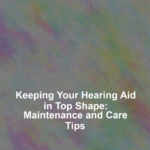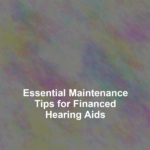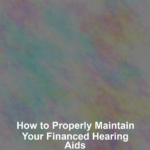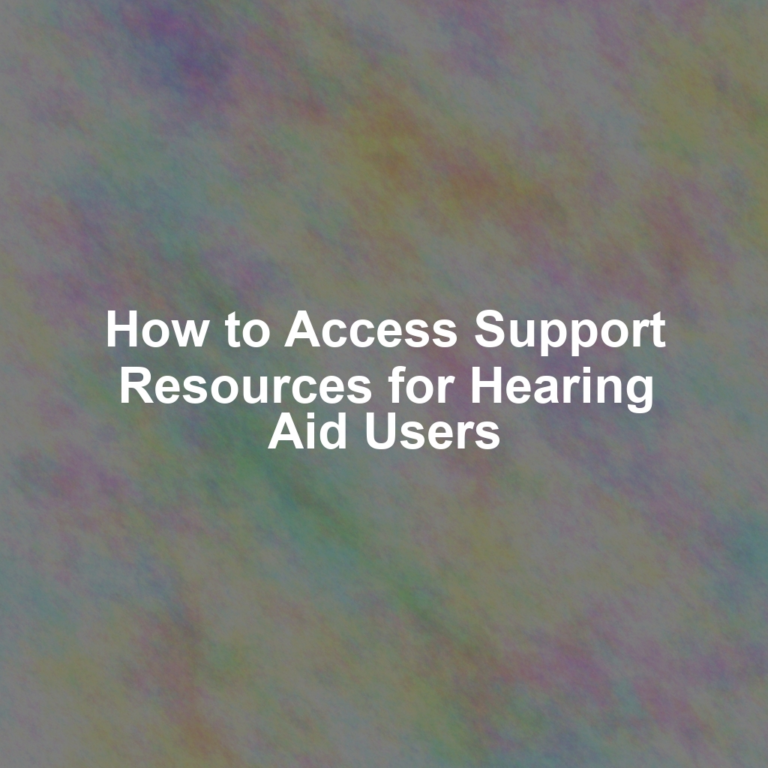Investing in hearing aids is akin to planting a garden; both require consistent care to flourish. As you navigate the world with clearer sounds, itG??s crucial to remember that your financed hearing aids are sophisticated devices that demand regular maintenance to function at their best.
YouG??ve already taken the leap to improve your hearing health, so letG??s talk about how you can safeguard your investment. From establishing daily cleaning rituals that will fend off the relentless onslaught of earwax and debris to understanding the intricacies of moisture protection, each step is a cornerstone in preserving your deviceG??s longevity.
YouG??ll also need to stay on top of battery care and timely replacements, not to mention the importance of regular performance checks to ensure everything is in working order. And while handling and storage might seem straightforward, there are best practices that might surprise you.
Stick with us to uncover the essential maintenance tips that will keep your hearing aids in top shape, ensuring they remain reliable companions on your auditory journey.
Daily Cleaning Rituals
To ensure your financed hearing aids function optimally, you should incorporate a simple yet thorough cleaning routine into your daily schedule. ItG??s not just about maintaining sound quality; itG??s about preserving your investment and avoiding preventable repairs.
Start by wiping the surface with a dry, soft cloth to remove earwax and debris every day. DonG??t use water or solvents as they can damage the electronic components. For in-the-ear models, youG??ll need a soft-bristled brush to gently clear the microphone ports and vents. Behind-the-ear styles require you to detach the earmold from the hook to clean it separately, ideally with mild soap and water, but ensure itG??s completely dry before reassembling.
Check the wax filter regularly; if itG??s clogged, your hearing aidG??s performance could be compromised. Most devices come with a tool to change this filter, and youG??ll find replacements in your maintenance kit or from your provider.
Lastly, at night, store your hearing aids in a dry, cool place to prevent moisture buildup. If youG??ve got a dehumidifier container or a drying kit, use it. Remember, a well-maintained hearing aid not only functions better but also lasts longer, saving you both money and hassle in the long run.
Moisture Protection Strategies
Building on the importance of a dry storage environment, itG??s crucial to adopt effective moisture protection strategies to safeguard your hearing aids from humidity and accidental water exposure. Remember, moisture is one of the biggest enemies of your hearing devices, potentially leading to reduced sound quality or even damage.
Firstly, always remove your hearing aids before showering, swimming, or engaging in heavy exercise that could lead to excessive sweating. If youG??re caught in the rain, dry them thoroughly as soon as possible. For added protection, consider using a hearing aid sweatband or a water-resistant cover when you canG??t avoid exposure to moisture.
At night, store your hearing aids in a dehumidifier specifically designed for these devices. This will help to extract any moisture thatG??s accumulated throughout the day. If you donG??t have a dehumidifier, a dry and secure container with a silica gel packet can also help to keep them dry.
Be mindful of the climate youG??re in; high humidity areas may require more rigorous moisture control. In these cases, itG??s worth investing in an advanced drying system or desiccant that can manage the higher levels of moisture.
Battery Care and Replacement
Ensuring your hearing aidsG?? batteries are properly cared for and replaced when necessary can significantly extend the lifespan and performance of your devices. To keep them in top shape, youG??ll want to make battery care a regular part of your routine.
Firstly, always handle your batteries with clean, dry hands to prevent corrosion or damage. Store spare batteries at room temperature, away from metal objects or coins that could potentially short-circuit them. ItG??s also wise to keep them in their original packaging or a battery case until youG??re ready to use them.
When itG??s time to replace the batteries in your hearing aids, make sure youG??re using the correct size and type. Insert them according to the G??+G?? and G??-G?? signs to avoid any potential issues. Once theyG??re in, let your hearing aids sit for a couple of minutes before turning them on; this allows the air to activate the battery fully.
Remember, hearing aid batteries can drain quickly, so itG??s crucial to turn off your devices when theyG??re not in use. Some models may even allow you to open the battery compartment to prevent drain overnight.
Lastly, be eco-friendly! Dispose of used batteries properly by recycling them or using designated disposal services. Taking these simple steps will keep your financed hearing aids working like new for as long as possible.
Regular Performance Checks
After mastering battery care, itG??s essential to conduct regular performance checks on your hearing aids to maintain their optimal functionality. You donG??t want to miss out on lifeG??s important sounds because of a preventable issue, do you?
Start by examining your device for any visible damage. Look closely at the microphone ports, receiver, and tubing for any signs of wear or blockage. If you find debris, gently clean it out with the tools provided by your audiologist. DonG??t use water or any other liquid that could harm the delicate electronics.
Next, check the sound quality. Is the audio clear, or does it crackle? Are you struggling to hear in environments that were previously fine? If somethingG??s off, it might be time to schedule a professional tune-up.
Handling and Storage Best Practices
To protect your hearing aidG??s longevity, itG??s crucial to handle and store the device correctly. Since youG??ve invested in a financed set, you want to ensure they last as long as possible. Here are some best practices for handling and storing your hearing aids:
-
Keep Them Dry and Cool: Always remove your hearing aids before showering, swimming, or engaging in heavy exercise that could expose them to moisture. When not in use, store them in a dry, cool place away from direct sunlight or heat sources.
-
Turn Them Off: Conserve battery life and prevent unnecessary wear by turning your hearing aids off when theyG??re not in your ears. This also reduces the chance of feedback or other noises that could occur if theyG??re left on accidentally.
-
Use a Storage Case: Protect your devices from dirt, dust, and accidental damage by keeping them in a dedicated storage case. This will help prevent loss and make it easy to find your hearing aids when you need them.
-
Handle with Care: Be gentle when inserting or removing your hearing aids. Rough handling can damage delicate components. Make sure your hands are clean and dry to avoid transferring dirt or oils to your devices.
Conclusion
Keep your financed hearing aids in peak condition by sticking to a daily cleaning routine, protecting them from moisture, and changing batteries promptly.
Regularly check their performance to catch any issues early. Remember to handle them with care and store them properly when not in use.
By following these simple maintenance tips, youG??ll ensure your hearing aids work effectively for years to come, letting you enjoy lifeG??s sounds without a hitch.










